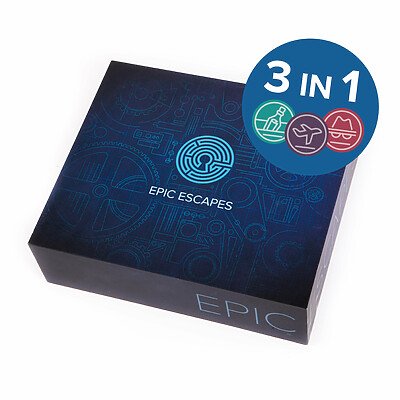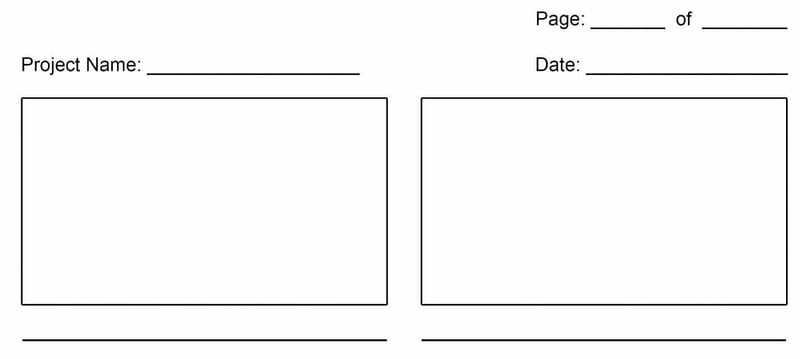Escape rooms in your own home?! Now there’s an idea!
Creating an escape room in your own home is a superb way to really transcend home entertainment away from its typical vices. It’s a super-fresh way to really mix things up from the typical games we play at home, and with a bit of thought, creativity and invention, escape-rooms-at-home can be very exciting indeed!
Table of Contents
A Break From The Norm!
We don’t need to lecture on and on about how we spend too much time on our phones, too much time watching TV, playing video games, scrolling social media and the rest of it. We all know it! The truth is, alternatives are pretty thin on the grounds.
Yes, board games are one alternative to digital entertainment, but many of us get burdened with the same board games – and we get bored of playing them over and over again.
You only need to mention the word Monopoly and some run in fear…A 4-hour marathon where dad gets angry at your hotel empire, grandma forgets to collect rent and mum steals from the bank.
Or what about a 20-year old box of Trivial Pursuits where someone clearly has read most of the answers before. They’re trying so hard to act as if just knew that Napolean’s least-known defeat came at the hands of some 3,000 bunny rabbits (yes it is true).
And don’t get us started on charades….!
Jokes aside, classic board games and family games like charades are obviously great and will always be much-loved inhabitants of a closet somewhere in the house.
But still, it’s time for a new flex. Escape room games that you can play at home really do fit into a brand new niche. They really do provide a break from the norm!
How Can You Play Escape Rooms at Home?
Escape rooms have quite basic principles. Essentially, the general idea is usually that you have to complete a number of challenges in a set time period.
The clock is ticking, and you need to escape in time or else BOOM! You’re blown into oblivion or another similarly perilous ending.
Some escape rooms can have a more of a role-playing theme, or act as a sort-of investigation, e.g. into a crime or situation. Plotlines may draw players along a journey, asking them to solve clues whilst revealing different aspects of the story.
One thing all escape rooms have in common are the puzzles. Puzzles are the cogs and gears of the escape room. They provide the engagement, the challenge and satisfaction. The storyline is also very important as this creates the atmosphere that transports escape rooms away from typical boardgames. The narrative is bolder, stronger and more immersive.
In your own home, escape rooms can be created from a series of puzzles. These can be created DIY, we’ll be providing some excellent pointers soon. An alternative is to invest in an escape room game. The Epic Escapes Starter Pack is an awesome way to get involved in playing your very own escape-rooms-at-home. It has everything you need for not one, or two, but three awesome unique escape rooms with 3 different difficulties. Awesome fun for all the family!

Step 1: Embrace The Idea
Firstly, you need to embrace the idea of an escape room. You don’t need to take it overly seriously if you don’t want to, but you have the option if you are that way inclined! With a bit of work and time, you could design an escape room game that takes all day to complete. Kids will absolutely love the trepidation of this, and given that everything is taking place at home, it’s always safe and can be stopped at any time.
We live in a day and age where escapism is important and finding new exciting things to do at home is important. But escape rooms at home are also perfect for aimless rainy days, wintertime and Christmas and school holidays.
Even birthday parties, dinner parties and other events hosted at home can be mixed up with a DIY escape room!
Step 2: Think of a Story
Thinking of a storyline is a really fun part of drafting an escape room at home. Seeing as you’re the one in control, you can get as weird or whacky as you like!
When we think of escape rooms, we might automatically think of crime scenes, or action-type settings. In reality, though, you can choose anything you want. One kick-starter campaign created an online escape room game centred around catching and taking care of mythical magical creatures.
It might sound cliche but you really are only limited by your imagination!
Here are some starting points:
- A group of friends wakes up in Las Vegas with no recollection of the night before. One of them is missing. What happened? (Sounds familiar to anyone?!)
- A chemical weapons specialist has been abducted during an investigation into chemical weapons production, where did he go and who did it?
- Prior to a suspected alien landing, a family of 3 on a farm in a remote rural area start suffering from strange delusions. They create a cryptic series of clues before disappearing, can you solve them?
- A young hobbit by the name of Odorf has been charged with a highly dangerous mission, can you plot a safe course for him to navigate his fantasy world?
- Troll! There’s a troll in the dungeon! Strange things are happening in Strawgoh School of Witchcraft and Wizardry, can you solve some strange manuscripts that have started appearing around the grounds?
Still looking for inspiration? Check out some of our awesome riddles and brainteasers for more awesome ideas!
Step 4: Create a Storyboard
Creating your own escape room games is about the process as well as the result. Making a storyboard can organise your plotline into different chapters. From these chapters, you can then set about trying to create your puzzles, which in many respects, is the hardest bit!
Think about how your story progresses. You might start off with a discovery, e.g. discovering that the chemical weapons specialist has gone missing from his house. What props are there? What signs would there be that something is wrong? How can you direct people to what has happened?
A storyboard can help you map this all out. You can download a free one here.

Scene 1 might be set in your living room.
Picture this scene in your living room: a chemical weapons specialist has been abducted during an investigation into chemical weapons production, where did he go and who did it?
On the chemical weapon’s specialist’s coffee table, there’s a note. It has 5 names scribbled on it:
- Alexander
- Chekov
- Nicolas
- Sasha
- Ivan
Below the note is a periodic table with the following elements circled:
- Carbon
- Sulfur
- Oxygen
- Nickel
- Lanthanum
Can you work out who of the names needs to be investigated?!
If you want to find out the answer to this riddle, find out here!
Once you have the name, then you can progress to the next stage of the puzzle. This could be facilitated by a letter that you open when the gamemaster deems you have solved the puzzle. The letter confirms you got the answer right and directs you to the next puzzle “open the kitchen drawer”.
Tip: Use Clues
This above riddle is fairly hard but clues are a great way to make life easier for players. A clue here might be to write out the chemical elements’ symbols:
- C
- S
- O
- Ni
- La
Can you see how a name can be spelt out here?
Step 5: Make More Puzzles
Making puzzles is the trickiest part of making escape rooms, but also the most satisfying. The more you make, the easier it’ll be to come up with cool new ideas.
Here are some pointers:
What’s Missing?
A good starting point is to create two photos, say of your front room or kitchen. In one of the photos, there is something added, different or missing. One idea is to turn a handle slightly. This will indicate that the handle was moved. This could direct people to that drawer/door. Behind it, there lies another clue! Simple but effective
Hiding Stuff
Open the door but there’s nothing there? Look closer. You could place an envelope partially hidden under a shoe, or plant pot, anything, open the envelope and voila! There’s another clue!
Riddles
Riddles are a great way to keep the story ticking along. They don’t need to be complicated.
A classic way to introduce a puzzle is with a written clue. For example, “gaze at a misty reflection and the next stage will reveal itself!”
This should direct people to a mirror. You can always give a clue!
Mirror Clues
By drawing lightly on a mirror with a soapy finger, you can write a message that will reveal itself when it’s steamed up.
By turning on a shower, players should see the message appear on the mirror.
USB Sticks and CDs
Want to add some technology? Direct players to a USB stick or CD that they have to insert into a PC or laptop.

You could even make an audio clue. This could contain a short video of someone walking around your house, heading to a bedroom and opening the closest. Or, they could drop the camera – this would direct players to where the camera was dropped. What other footage is on the camera?!
For more puzzle idea, head here.
Step 6: Play!
Time to play! You can use a timer, but you don’t need to! It can definitely add to the excitement. Remember that clues are usually inevitable but don’t make it too easy. Part of the fun is puzzling over clues until that EUREKA! moment.

